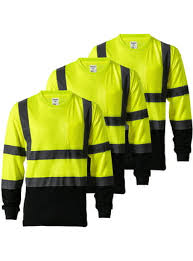TOP 5 WAYS TO MAINTAIN YOUR UNIFORM
TOP 5 WAYS TO MAINTAIN YOUR UNIFORM
The process of designing, delivering, and fitting your uniform can be a timely and costly investment for a business and keeping the wardrobe looking fresh, clean, and crisp is of the utmost importance to ensure your team look professional, presentable, comfortable and continue to give an impression of luxury and class.
You may have worries about the efficiency, longevity, and overall ability to get the look you want when washing your employees’ uniforms or workwear. While the ultimate goal is to have a clean and professional look, there are several ways to achieve that goal.
OEM printing logo personalized reflective safety Vest
1. SELECTING A LAUNDRY FACILITY
Many of our clients have a dedicated laundry facility onsite to ensure full control of the laundering process. Doing your laundry in-house lets you precisely control temperature, use of detergents, spin rates and drying times, you can then respond to all your laundry needs fast and reliably without depending on delivery to an external supplier and their turn-around times for handling and returning your staff uniforms.
However, for many smaller businesses this is not always possible, therefore it is best to outsource this to a reputable offsite facility.
The important things to consider when outsourcing:
· You select a reliable and consistent launderette; remember you want to build a long-standing relationship so ensure communication is right from the start. Do you research, look at their reviews and ask for recommendations from colleagues.
· Visit their facility to ensure they have the correct machinery and that is a clean working environment.
· Bring example garments to your visit and talk through each garment with the facility. Take with you a clear washing guide for the supplier for them to put on the wall, with all washing instructions per garment.
2. FOLLOW THE WASHCARE INSTRUCTIONS
If you fail to follow the instructions, you may face problems like ripped fabric,weakened fabrics and shrinking. Washing, drying, and ironing at extremely hot temperatures may cause the garment to shrink or melt. Iron on the reverse where possible, as this can reduce shining and damage to the front of the garment, and keep temperatures low.
3. STORE YOUR GARMENTS CORRECTLY
For blazers, jackets, coats, and structured clothing ensure they are hung, as this will reduce creasing and crushing. Select a smooth hanger to avoid snagging and a gripper so it does not slip off the hanger. Always fold knitwear, hanging knitwear can cause stretching and distortion of the garment, especially at the shoulders.
4. KEEP UP BASIC REPAIRS
Ensure repairs are done as soon as possible to avoid further damage, such a tacking up hems and repairing loose buttons. Prevention is better than waiting for it to be irreparable.
5. LAUNDER REGULARLY
The longevity of a uniform will require daily maintenance andweekly cleaning. Only clean your uniform when it has been used, is dirty, or has been stored away for a lengthy time. The first wash of your uniform is very important to ensure you preserve the colour.
-
HDPE Material Durability in Construction Hard Hats
NewsJun.26,2025
-
Green Safety Vest Visibility in Low-Light Security Operations
NewsJun.26,2025
-
Cut-Resistant Materials for Weed Eater Operators
NewsJun.26,2025
-
Ball Cap Safety Helmet Design for Low-Profile Work Environments
NewsJun.26,2025
-
Adjustable Visor Angles in Multi-Purpose Safety Helmets
NewsJun.26,2025
-
ABS Helmet Impact Resistance Testing Standards
NewsJun.26,2025

